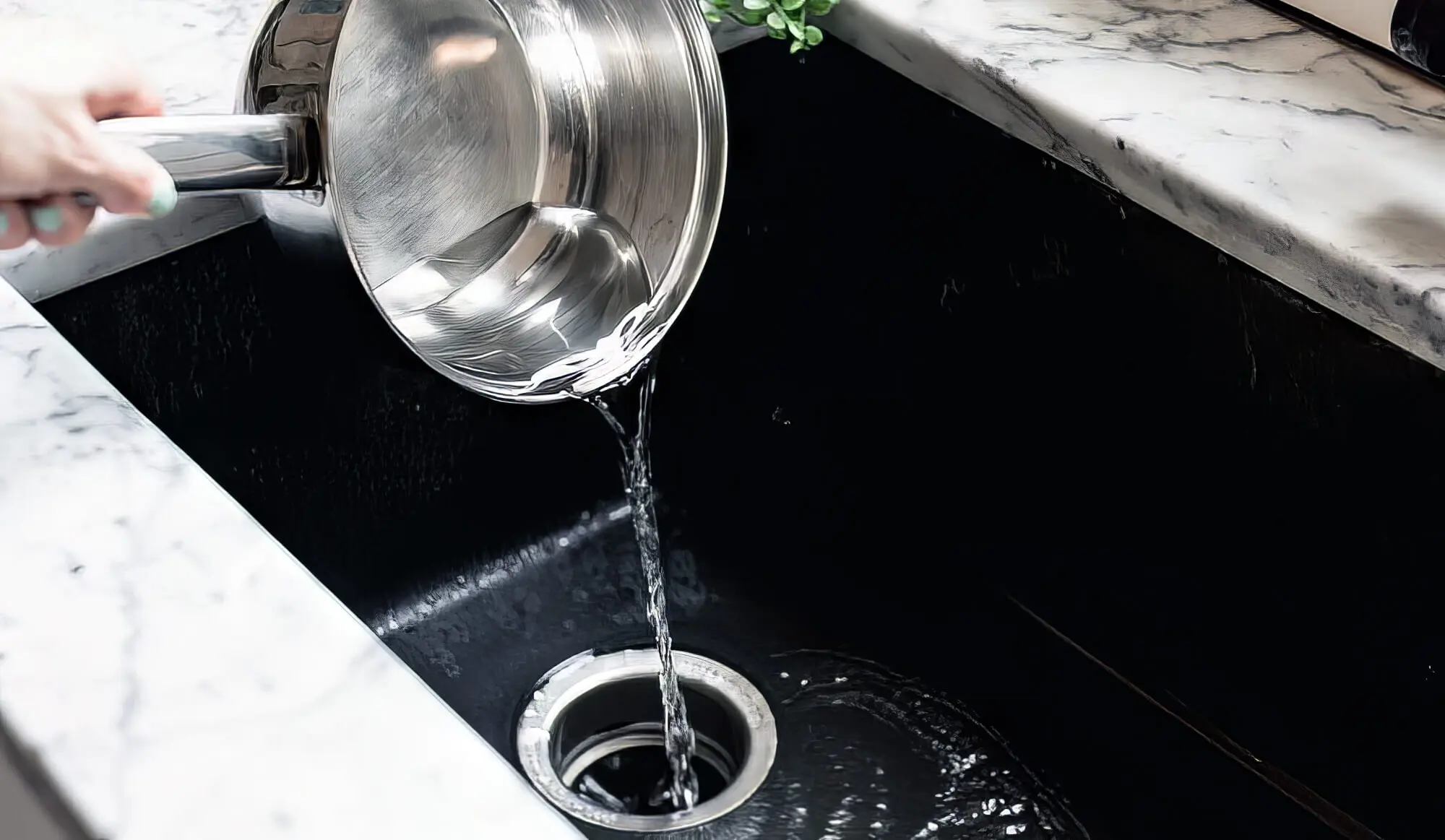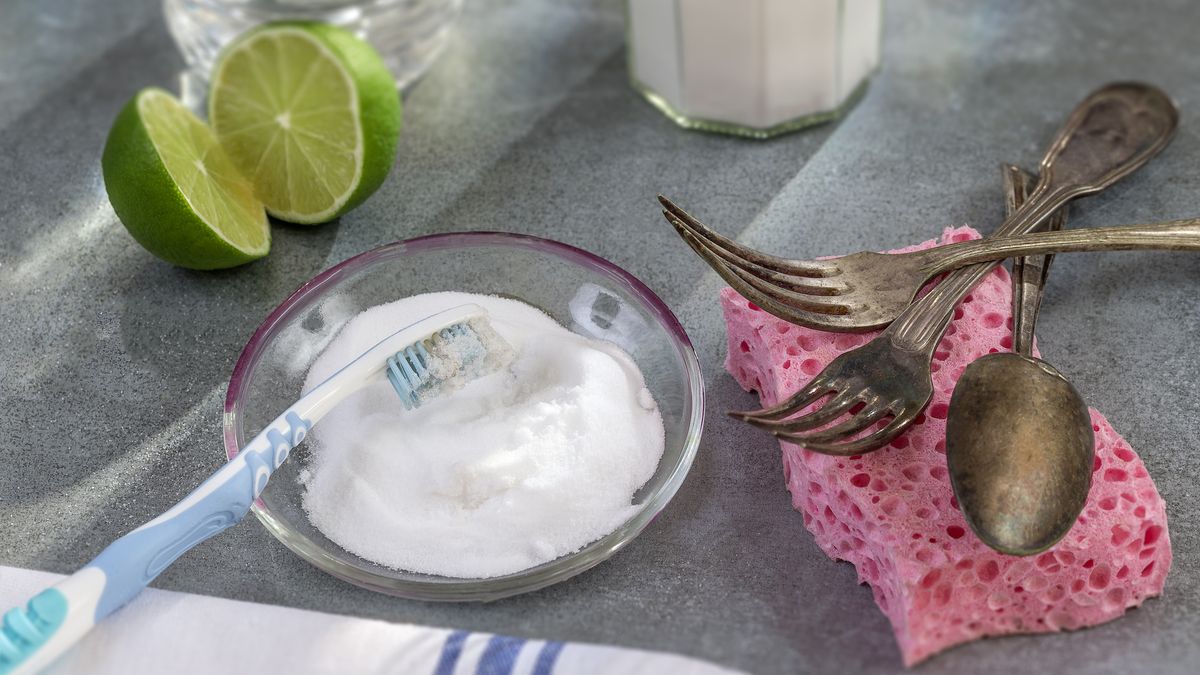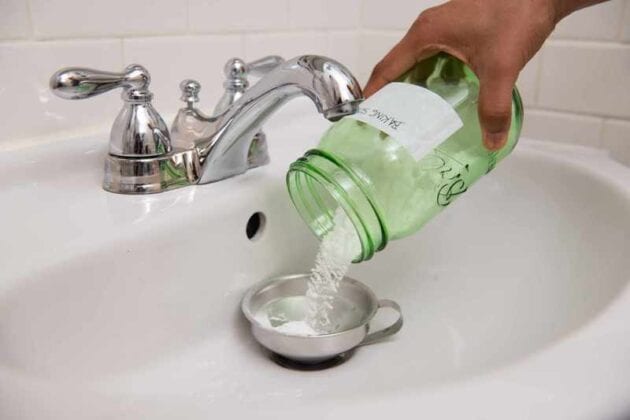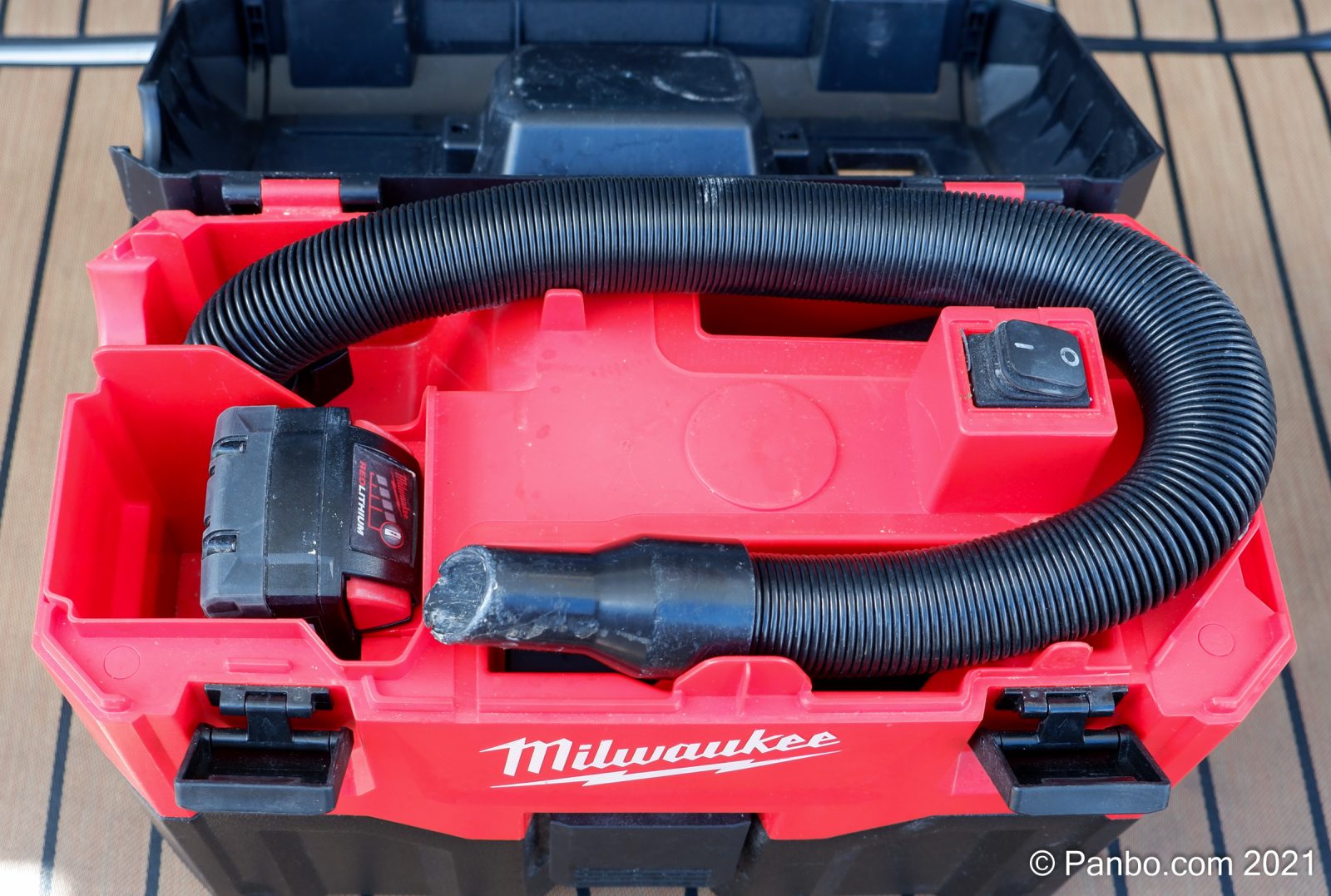1. Use a plunger to dislodge the clog
If you're dealing with a stubborn kitchen sink clog, the first tool you should reach for is a plunger. This trusty tool can help dislodge the clog and get your sink draining smoothly again. Make sure to cover the drain opening completely with the plunger and use firm, quick plunges to create suction and force the clog out. If the clog is particularly stubborn, you may need to try a different method.
2. Pour boiling water down the drain
Boiling water can be a simple yet effective solution for clearing out clogs in your kitchen sink. The heat from the water can help break down and dislodge any grease or debris that may be causing the clog. Slowly pour the boiling water down the drain and let it sit for a few minutes before attempting to use the sink again. For best results, repeat this process a few times.
3. Use a mixture of baking soda and vinegar
A mixture of baking soda and vinegar is a tried and true method for clearing clogs in sinks. Start by pouring a cup of baking soda down the drain, followed by a cup of vinegar. Let the mixture sit for about 10 minutes before pouring boiling water down the drain to flush it out. The combination of these two ingredients can help break down and loosen the clog.
4. Try a commercial drain cleaner
If the above methods don't work, you may want to try a commercial drain cleaner. These products are specifically designed to dissolve clogs and can be found at most hardware or home improvement stores. However, be cautious when using these products as they can contain harsh chemicals that may damage your pipes. Make sure to follow the instructions carefully and use protective gear.
5. Use a plumbing snake to remove the clog
A plumbing snake, also known as a drain auger, is a long, flexible tool that can be inserted into your drain to remove clogs. Insert the snake into the drain and rotate it until you feel resistance, then push and pull to break up the clog. Once the clog has been loosened, run hot water down the drain to flush it out.
6. Use a wet/dry vacuum to suck out the clog
If you have a wet/dry vacuum, you can use it to suck out the clog in your kitchen sink. First, set the vacuum to the wet setting and cover the vent with a cloth to prevent any debris from getting into the machine. Place the hose over the drain and turn on the vacuum to suck out the clog. This method can be effective for larger clogs that a plunger may not be able to handle.
7. Remove and clean the P-trap
The P-trap is a curved pipe located under your sink that is designed to trap debris and prevent it from clogging your pipes. If the clog is located in the P-trap, you may need to remove and clean it out. Place a bucket under the P-trap to catch any water or debris, then use a wrench to loosen the nuts and remove the trap. Clean out any debris and reattach the trap, making sure to tighten the nuts securely.
8. Use a combination of salt, baking soda, and vinegar
For a more powerful solution, you can combine salt, baking soda, and vinegar to create a powerful cleaning mixture. Start by pouring half a cup of salt down the drain, followed by half a cup of baking soda. Then, pour a cup of vinegar down the drain and let the mixture sit for about 15 minutes. Finally, pour boiling water down the drain to flush out the clog.
9. Use a plunger specifically designed for sinks
If a regular plunger isn't doing the trick, try using a plunger specifically designed for sinks. These plungers have a smaller suction cup that is designed to fit over sink drains and create a tighter seal. This can help provide more force and pressure, making it easier to dislodge stubborn clogs.
10. Call a professional plumber for stubborn clogs
If all else fails, it may be time to call in a professional plumber. They have the tools and expertise to tackle even the most difficult clogs and can help prevent any further damage to your pipes. If you have tried multiple methods and the clog still persists, it's best to leave it to the professionals.
Dealing with a difficult kitchen sink clog can be frustrating, but with these 10 tips, you can get your sink draining smoothly again in no time. Start with the simplest methods and work your way up to more powerful solutions if needed. And remember, when in doubt, call a professional for help. Your sink – and your sanity – will thank you.
Say Goodbye to Stubborn Clogs: Tips for Keeping Your Kitchen Sink Flowing Smoothly

Don't Let Clogs Ruin Your Kitchen Experience
 If you've ever had to deal with a clogged kitchen sink, you know how frustrating and inconvenient it can be. Not only does it disrupt your daily routine, but it can also lead to unpleasant odors and potential damage to your plumbing.
Difficult kitchen sink clogs can be a nightmare to deal with, but with the right approach, you can keep your sink flowing smoothly and avoid future clogs.
Here are some helpful tips to get rid of those stubborn clogs and maintain a clean and functional kitchen sink.
If you've ever had to deal with a clogged kitchen sink, you know how frustrating and inconvenient it can be. Not only does it disrupt your daily routine, but it can also lead to unpleasant odors and potential damage to your plumbing.
Difficult kitchen sink clogs can be a nightmare to deal with, but with the right approach, you can keep your sink flowing smoothly and avoid future clogs.
Here are some helpful tips to get rid of those stubborn clogs and maintain a clean and functional kitchen sink.
Prevention is Key
 The best way to avoid dealing with difficult clogs is to prevent them from happening in the first place.
Regular maintenance and good habits can go a long way in keeping your kitchen sink clog-free.
Start by being mindful of what you put down your sink. Avoid pouring grease, oil, and food scraps down the drain as they can solidify and cause blockages. Use a drain cover or strainer to catch any debris and dispose of it in the trash.
Also, make sure to run hot water down the drain after each use to help flush out any potential buildup.
The best way to avoid dealing with difficult clogs is to prevent them from happening in the first place.
Regular maintenance and good habits can go a long way in keeping your kitchen sink clog-free.
Start by being mindful of what you put down your sink. Avoid pouring grease, oil, and food scraps down the drain as they can solidify and cause blockages. Use a drain cover or strainer to catch any debris and dispose of it in the trash.
Also, make sure to run hot water down the drain after each use to help flush out any potential buildup.
Try Natural Solutions
 If you do encounter a clog, don't reach for harsh chemicals right away. Not only can they be harmful to your pipes, but they can also be dangerous to handle. Instead,
try using natural solutions that are gentle yet effective in breaking down clogs.
One option is a mixture of baking soda and vinegar. Pour a cup of baking soda down the drain, followed by a cup of vinegar. Let it sit for 15 minutes before flushing with hot water.
You can also try using a plunger to dislodge the clog or a drain snake to manually remove it.
If you do encounter a clog, don't reach for harsh chemicals right away. Not only can they be harmful to your pipes, but they can also be dangerous to handle. Instead,
try using natural solutions that are gentle yet effective in breaking down clogs.
One option is a mixture of baking soda and vinegar. Pour a cup of baking soda down the drain, followed by a cup of vinegar. Let it sit for 15 minutes before flushing with hot water.
You can also try using a plunger to dislodge the clog or a drain snake to manually remove it.
Call in the Professionals
 For more stubborn clogs that won't budge, it's best to call in a professional plumber. They have the tools and expertise to handle even the most difficult clogs without causing damage to your plumbing.
Regular maintenance checks by a professional can also help prevent future clogs and ensure your kitchen sink is functioning properly.
For more stubborn clogs that won't budge, it's best to call in a professional plumber. They have the tools and expertise to handle even the most difficult clogs without causing damage to your plumbing.
Regular maintenance checks by a professional can also help prevent future clogs and ensure your kitchen sink is functioning properly.
Keep Your Kitchen Sink Clog-Free
 With these tips, you can say goodbye to difficult kitchen sink clogs and keep your sink flowing smoothly. Remember to be mindful of what you put down the drain, use natural solutions when possible, and seek professional help when needed.
A clean and functional kitchen sink is not only a convenience but also a key component of a well-designed house.
By following these tips, you can maintain a clog-free sink and enjoy a hassle-free kitchen experience.
With these tips, you can say goodbye to difficult kitchen sink clogs and keep your sink flowing smoothly. Remember to be mindful of what you put down the drain, use natural solutions when possible, and seek professional help when needed.
A clean and functional kitchen sink is not only a convenience but also a key component of a well-designed house.
By following these tips, you can maintain a clog-free sink and enjoy a hassle-free kitchen experience.
















.jpg?time=1689761045394)





:max_bytes(150000):strip_icc()/GettyImages-1459148353-279aed56a15749c2a7310a882dbe3571.jpg)








































.JPG?format=1500w)




















































